Part V. Planchet Errors:
Bimetallic Errors:
Wrong ring
Definition: A bimetallic planchet that is assembled using the correct core but the wrong ring. Bi-metallic error coins are restricted to foreign countries. These coins may experience any of the many types of striking errors listed in the Error-Variety Ready Reference however, one must understand we are dealing with two components, a ring and a core. Any number of exotic possibilities or combinations of die varieties, die errors, planchet errors and striking errors can be found on bi-metallic coinage. These errors are unequivocally rare.
There are any number of sources for the incorrect ring.
- It might be a ring that was intended for a different bimetallic denomination
with a similar-sized hole. - Punched out of stock intended for a different bimetallic denomination.
- Punched out of stock intended for a solid-alloy denomination.
- Punched out of stock intended for the core.
- An inadvertently holed, solid-alloy blank or planchet intended for another
denomination. - A previously-struck, solid alloy coin that was accidentally holed.
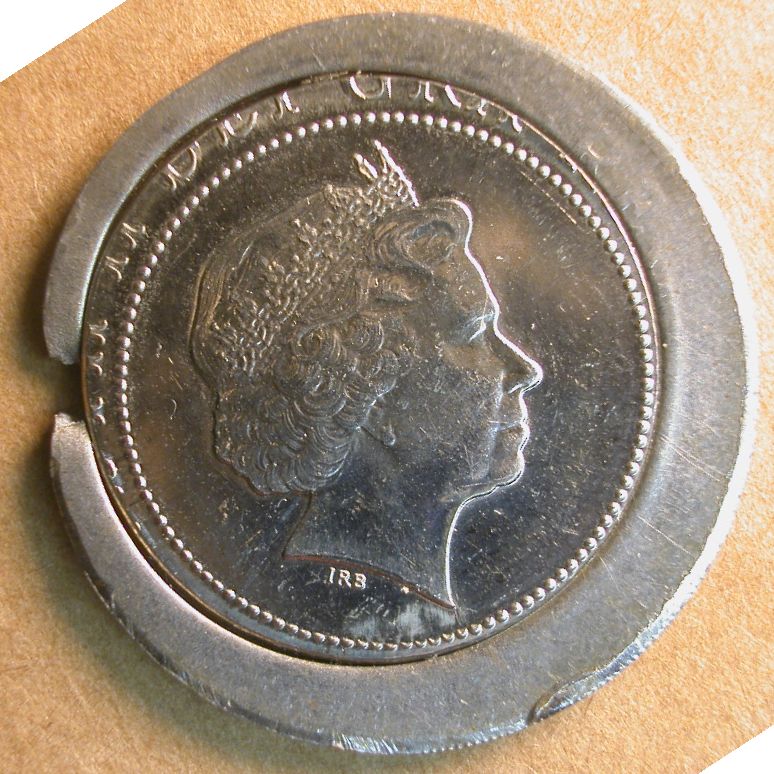
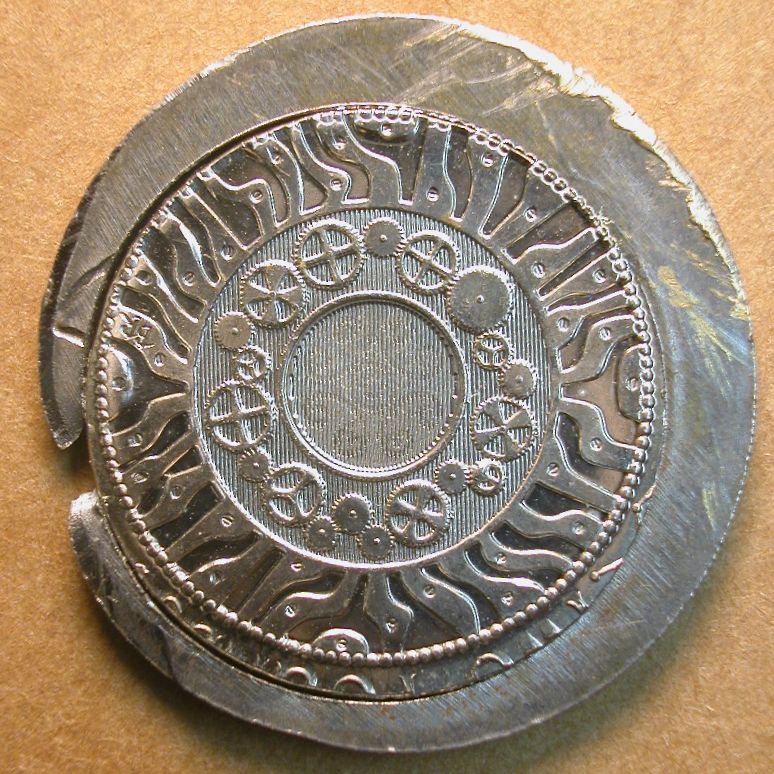
This 2001 British 2 pound coin has a normal copper-nickel core surrounded by a steel ring instead of the expected nickel-brass ring. The steel ring is substantially thinner than both the core and normal ring, which is why so few peripheral design elements appear on it. The steel ring weighs an estimated 2.6 grams instead of the normal 5.9 grams. The edge of the off-metal ring displays a few letters of “ON THE SHOULDERS OF GIANTS”. This shows that the composite disc passed through the appropriate edge-lettering device and that its original external diameter was close to that of an assembled 2 pound blank.
The center hole was presumably punched to normal diameter, since British 2 pound bi-metallic blanks are pre-assembled. The hole’s offset position may be partly due to the slightly undersized steel disc occupying an uncentered position within the hole-punching device. The offset appearance was accentuated by uneven expansion of the core during the strike, which split the ring at 9:00.
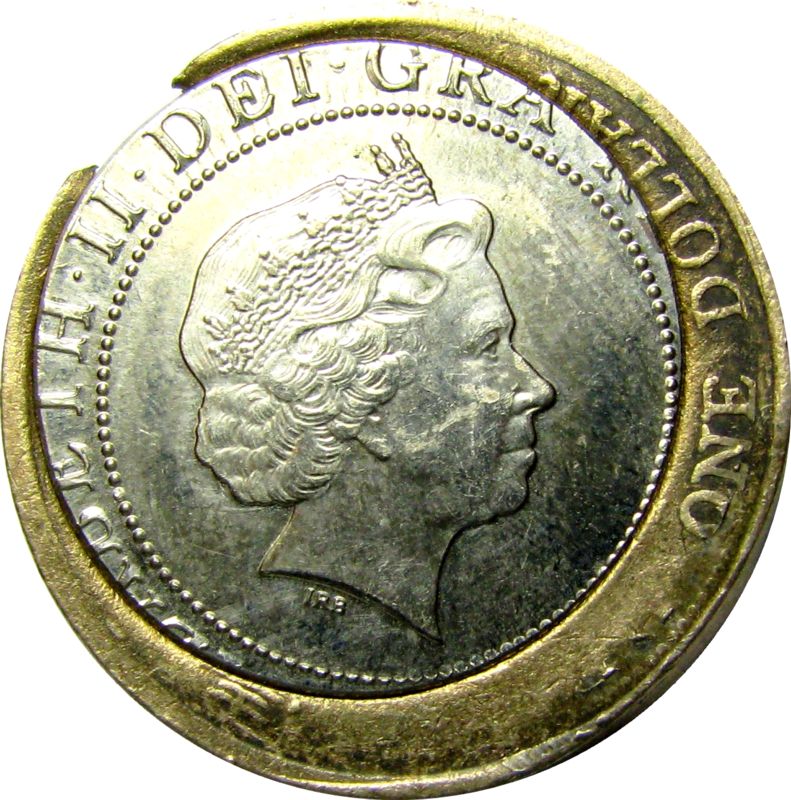
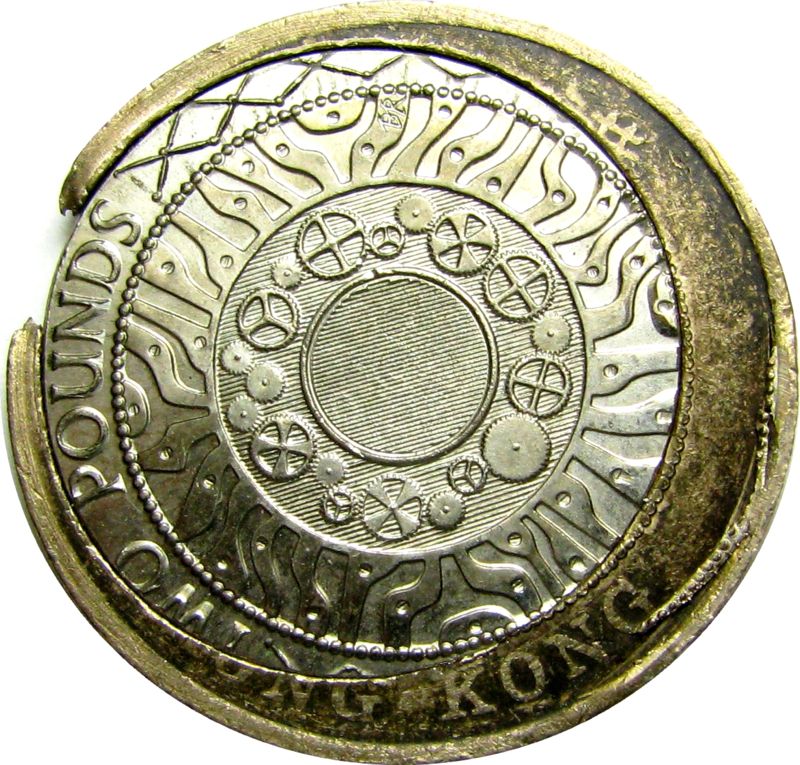
The ring on this British 2 pound coin was derived from a worn, battered, and discolored Hong Kong dollar (1993-1998). Composed of a solid copper-nickel alloy, this coin had its center punched out and filled with a British 2 pound core. A misaligned hole, combined with uneven expansion of the core, caused the ring to split at 10:30 when it was struck by the 2 pound dies. The edge of the ring carries no edge lettering. It either bypassed the edge lettering device or was too small to betray its passage through the device.
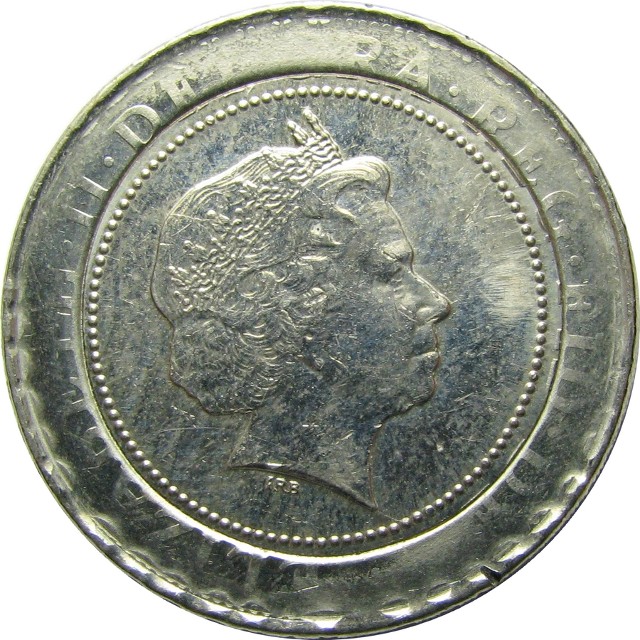
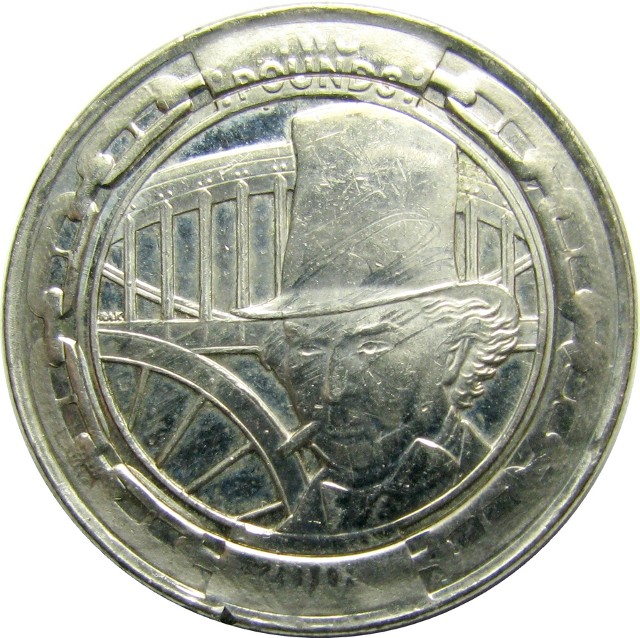
A two pound 2006 Isambard Brunnel from Great Britain. The ring is is strongly attracted to a magnet. (Either elemental nickel or steel composition). Weight: 10.30 grams.
Note the following specification information regarding U.K. outer rings: 12.0 g is normal weight for a bi-metallic of this series. A two pound ring consists of the following composition and weight: Two pound ring 76% Copper, 4% Nickel, 20% Zinc Weight – 6.0 g
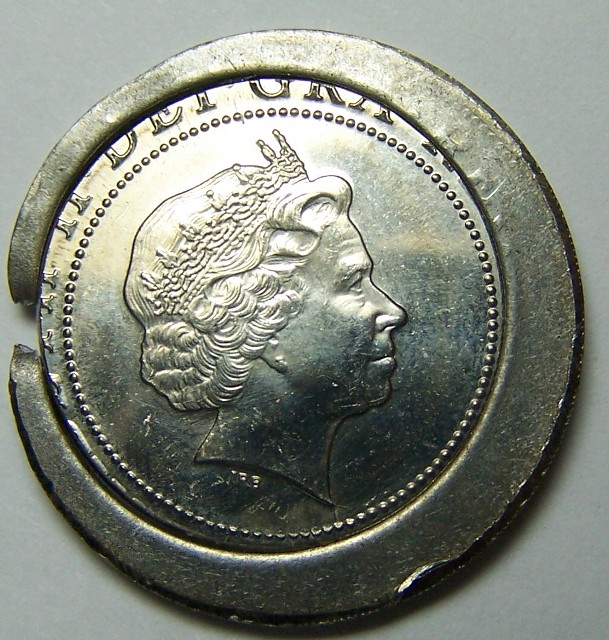
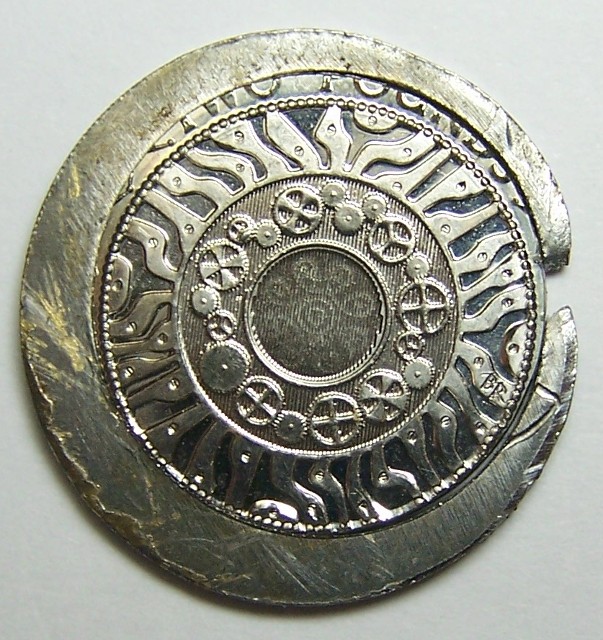
A two pound Technology from Great Britain. Ring is strongly attracted to a magnet (steel ring). The ring also has a misaligned center hole. The ring is much thinner than the core resulting in the near incomplete absence of design transfer on either face of the ring. The ring also sheared & snapped when struck.
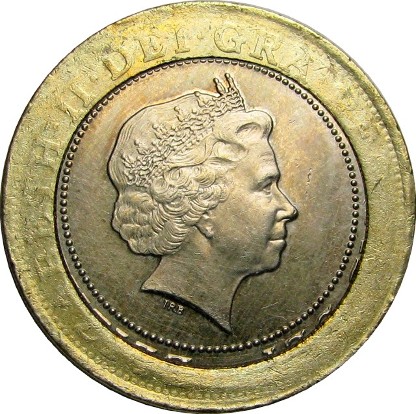
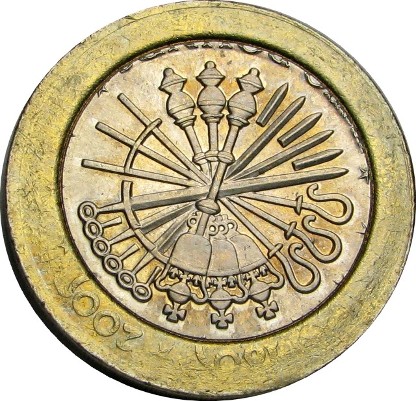
A two pound 2007 Gun Powder Plot from Great Britain with wrong ring. The ring also has a misaligned center hole. The ring is thinner than the core resulting in the absence of some design transfer on either face of the ring.